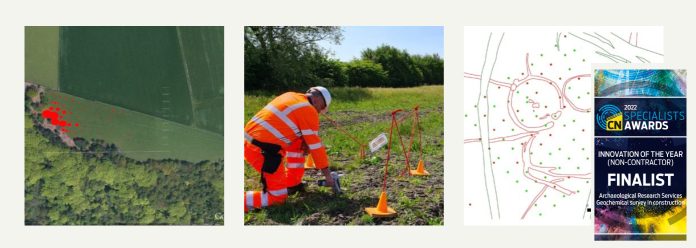Archaeological Research Services Ltd, were recently up for awards in technology and innovation, these awards may have passed us by, but it’s important, due to the nature of the sector that the award came from.
The Chartered Institution of Highways & Transportation (CIHT) Awards and the
Construction News Specialist Awards
In both cases we are seeing the construction industry recognising the ground-breaking and innovative work as part of their industry. Accepting and rewarding archaeology as an integral part of the process.
The Construction News Specialist Awards in September saw them as finalists for two key categories.
‘Innovator of the Year’ for geochemical survey in construction, and also ‘Specialist Contractor of the Year’ against some fantastic competition!
Said the judges in their comments on our entry: “This company work on a range of very exciting projects and are very focused on community outreach. They have worked hard to create a training programme that is unique in their sector.”
They were thrilled to learn a couple of months previously that they had been shortlisted for the final of the CIHT Awards in September. While they didn’t win, ARS Ltd received an honourable commendation in the ‘Technology and Innovation’ Award.
Speaking about these recent award ceremonies, Will Throssel, the COO of ARS Ltd, had this to say:
“Not only is this a great time for the company, but a great moment for commercial archaeology in general. It’s great to be recognised, as it shows how we are an integral part of delivering infrastructure and construction projects, how our innovations make a difference, and how we can add value too.”
Geochemistry, and more generally chemical analysis, can be employed at all points in the archaeological process, from pre-application evaluation, post-determination mitigation to post-excavation analysis. Geochemical survey offers a rapid and cost effective method that can detect and define areas of past archaeological activity and significance. Like geophysics it is low impact and can be undertaken as either a non-destructive or minimally invasive technique. It is effective in understanding the spatial distribution of past human activities when used in the topsoil and/or at depth through coring or during archaeological excavation. Learn more here:
Geochemical Analysis – Archaeological Research Services Ltd

